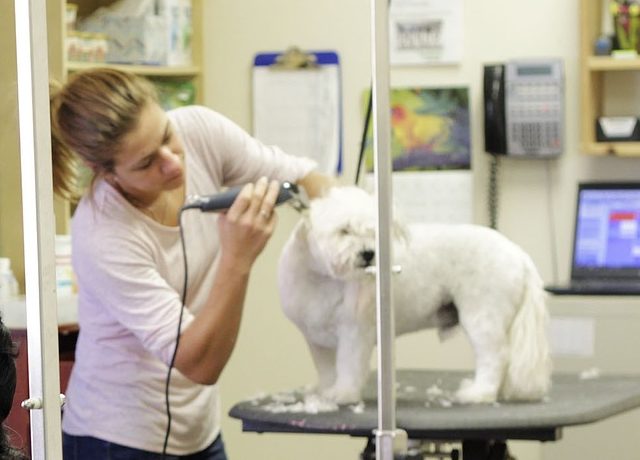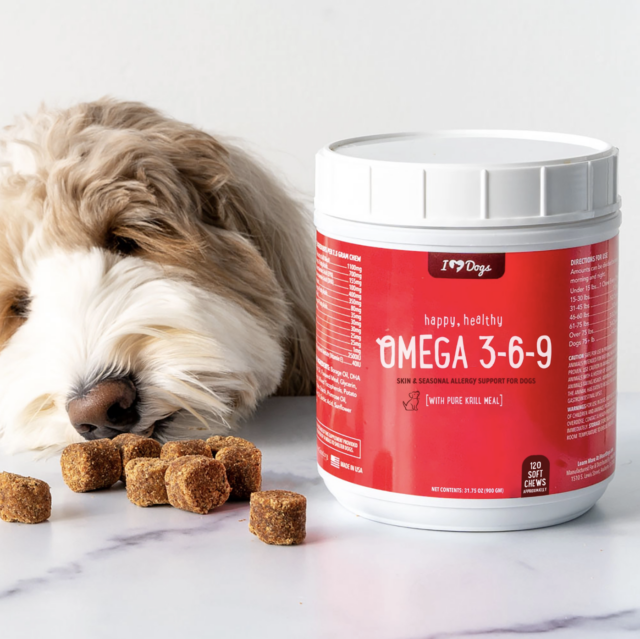Ear infections are messy, stinky, frustrating, and worst of all, uncomfortable for your dog. Several factors contribute to the development of yeast or bacterial ear infections including allergies and excess hair or moisture in the ear.
The following 8 steps can help you get ahead of the causes and prevent this itchy, painful and all-too-common problem from affecting your pup.

1. Know your dog’s risk.
While any dog can develop ear infections, several breeds are especially prone to them. Cocker and Springer Spaniels have thick hair and large, heavy ears that droop down over the ear canal rather than standing erect. These factors allow dirt, debris, wax and moisture to become trapped in the warm, dark environment of the ear canal, creating a perfect breeding ground for yeast and bacteria.
All “floppy-eared” breeds are at a higher risk for infection, but those that love to swim and those with allergies are especially susceptible. America’s favorite breed, the Labrador Retriever, adores splashing in the water and has a propensity for allergy-related skin and ear infections.
Shar Peis are prone to ear infections for another reason – their heavy skin folds and narrow ear canals draw and trap debris and moisture. The more you know and understand about your dog’s risk factors, the better equipped you will be to protect him from infection-causing agents.

2. Feed a healthy diet free of potential allergens.
Food-related allergies often lead to skin and ear related symptoms in dogs. The canals become red, itchy and inflamed, causing the dog to excessively scratch and shake its head. This disrupts the normal defenses against infection, allowing an overgrowth of yeast or bacteria.
Allergy testing can help pinpoint your dog’s triggers and there are several options for those with special dietary needs. Before making any major changes to your dog’s diet, consult your vet. He or she can help you decide if raw feeding, home-cooked diets, grain-free or limited-ingredient dog foods are the right choice for your pup.

3. Use external parasite prevention.
Ear mites can cause ear infections but are relatively rare in healthy adult dogs that live indoors. The same medications that protect your pooch from fleas and ticks are often enough to repel these parasites. If ear mites are a problem for your dog, discuss treatment and prevention with your veterinarian.

4. Check your dog’s ears regularly for inflammation, discharge, and odor.
A healthy canine ear should appear light pink, smooth, and free from swelling, irritation, and excessive amounts of debris. A slight yeasty smell can be normal, but if the odor is overpowering or sickly-sweet, you may be dealing with an infection. When in doubt, seek veterinary attention before attempting to treat ears that may be infected.

5. Gently clean the ears.
When your dog’s ears are healthy but have mild dirt or debris in the outer folds, clean them with a product designed to gently remove debris and keep them free of infection-causing wax and discharge.
Related:7 Best Ear Cleaners & Wipes for Dogs
6. Make sure the ears are completely dry after bathing and swimming.
There’s no need to stop a water-loving pup from enjoying an occasional swim, as long as the ears are thoroughly dried afterwards. The same goes for bath time. Many people use a cotton ball or gauze square to gently dry the pinna (ear flap) and opening of the ear canal after exposure to water, but there may be a better solution.

7. Remove excess hair from the ear canals if appropriate.
Excessive hair in the outer ear canal can act as a net to trap moisture and debris, increasing the risk of infection. Many groomers “pluck” this hair as part of their routine, especially in hairy-eared breeds like Spaniels, Poodles, and Shih-Tzus.
While there has been some argument in the veterinary community on whether or not to pluck canine ears, the general consensus is that dogs prone to ear infections should at least have their ear hair kept at bay through trimming.

8. Supplement your dog’s diet with Essential Fatty Acids.
Omega-3 fatty acids are known to nourish the skin and reduce inflammation, which lessens the risk of infection. Dogs with allergies are prone to inflammation of the skin and ears. Still, they may not be able to take average fatty acid supplements because they contain ingredients that trigger their allergies.
Omega 3-6-9 Select Grain Free Skin & Coat Chews with Pure Antarctic Krill Oil were formulated by veterinarians with these dogs in mind. Krill oil offers a more concentrated and bioavailable source of omega-3s than other fish oils, ensuring maximum impact.
The powerful active ingredients in Omega 3-6-9 chews do more than just support skin and coat health; they also promote joint health, heart health, immune system health, cellular health, and brain and eye development & maintenance – all packed into a delicious, grain-free, soy-free, gluten-free formula ideal for dogs with food sensitivities or allergies!

 Toledo, United States.
Toledo, United States.
